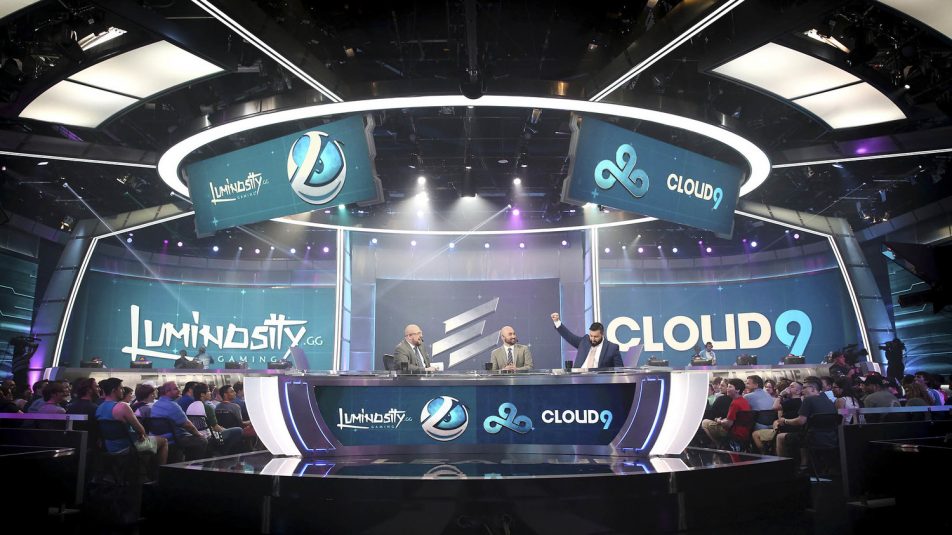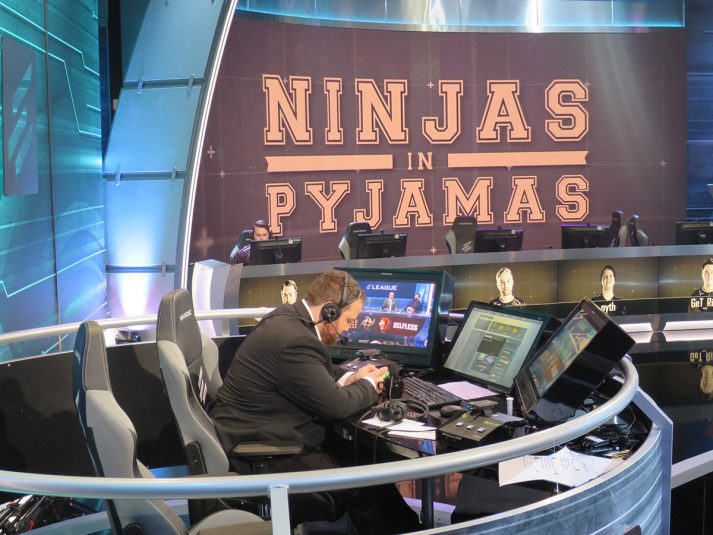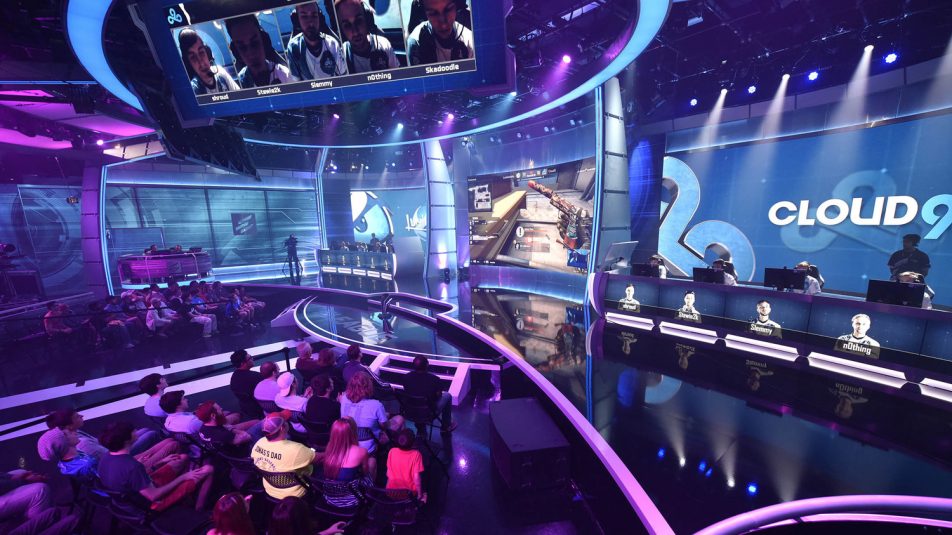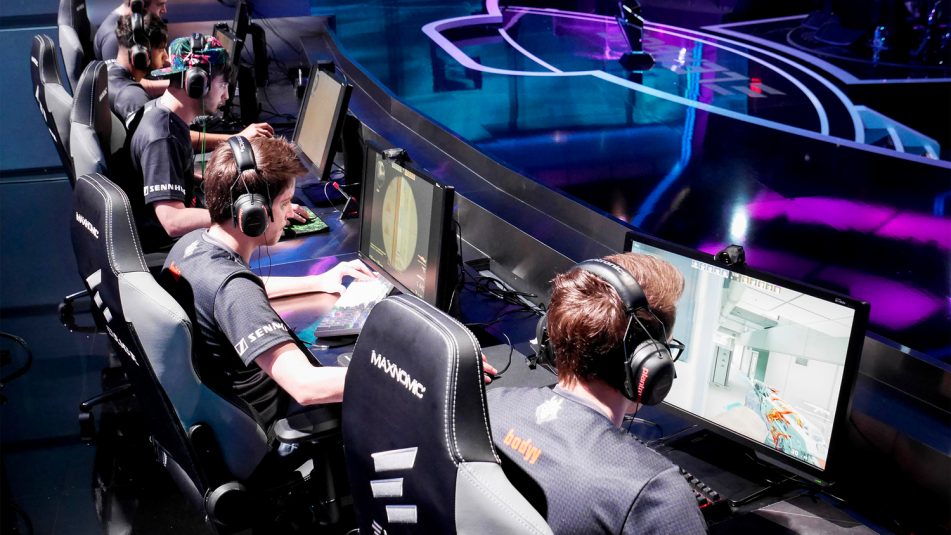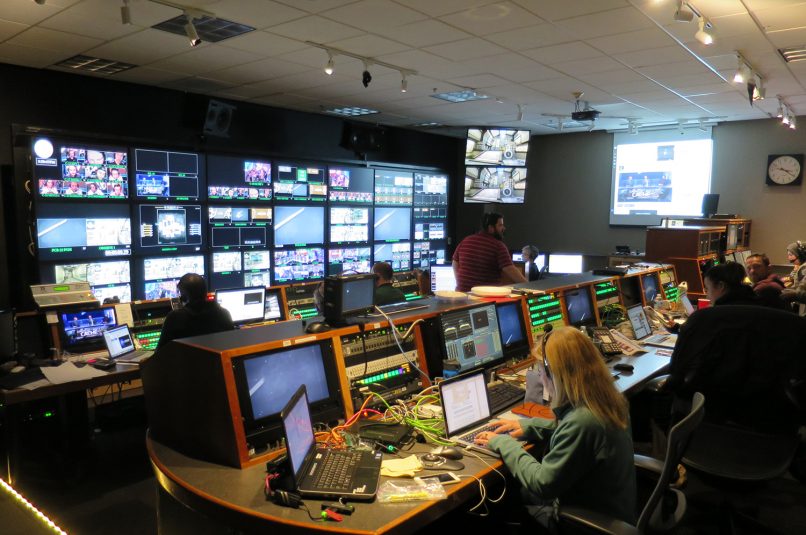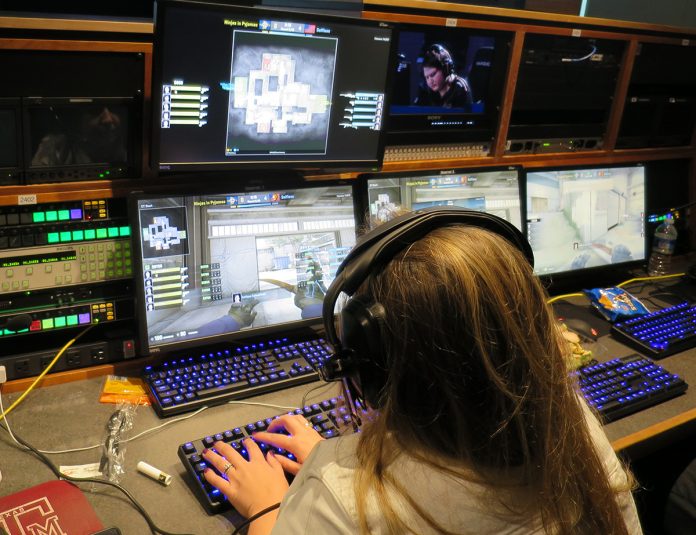Inside ELeague: Bringing Turner Sports Production Quality to eSports
The inaugural 10-week season offers live-streamed competition and primetime telecast
Story Highlights
As the first full month of Turner Broadcasting and WME-IMG’s grand “eSports on TV” experiment comes to an end, ELeague’s production team is hitting its stride at Turner Studios. Each of 10 weeks of the demanding inaugural-season schedule begins on Tuesday at 12 p.m. ET with roughly seven hours of Counter-Strike: Global Offensive competition live-streamed on Twitch and culminates in a primetime telecast on TBS at 10 p.m. Friday. Each week, the ELeague stream and Friday telecasts emanate from the same Atlanta control room used for TNT’s Inside the NBA and a state-of-the-art 10,000-sq.-ft. arena/studio built specifically for eSports.
“Much of what we’re doing is not new to television, but what we’ve done with ELeague has elevated the level of production and the level of detail put into it,” says Tom Sahara, VP, operations and technology, Turner Sports. “Previous eSports events were big, but they didn’t have the same attention to detail as what we’ve done here. And that’s the difference. We are producing ELeague with the same level of support, equipment, and attention to detail as anything else Turner Sports produces.”
ELeague production operations are handled by Turner Sports, which began developing plans for the new studio and necessary infrastructure at Turner’s Techwood campus early last fall when the effort was announced. Although much of ELeague’s production team and leadership has a traditional television background at Turner Sports, eSports veterans, including VP/GM Christina Alejandre and on-air talent, are also on the team to ensure that the results ring true to the core gaming audience.
“The way we have approached it is, you have a group of professionals in the eSports space, like Christina, our talent, our producer, and our observers, who are pros that are extremely passionate about eSports and have been in it since the inception,” says Turner Sports VP/Coordinating Producer Steve Fiorello, who oversees ELeague production. “Then you have the traditional Turner Sports people, who bring the same passion and experience on the linear side. And we’ve put them together with no egos so that we can all understand each other’s respective spaces. It’s really the best of both worlds.”
Inside the Studio: Plenty of Tech Toys to Appeal to Gamers
The slick new ELeague arena features 25,000 sq. ft. of LED lighting and serves as both television studio and gaming arena. The facility, designed and integrated in-house by Turner, has two dedicated soundproof areas for the five-person teams competing, a pod for the casters (commentators) to call the action, and a movable desk for studio programming throughout the day.
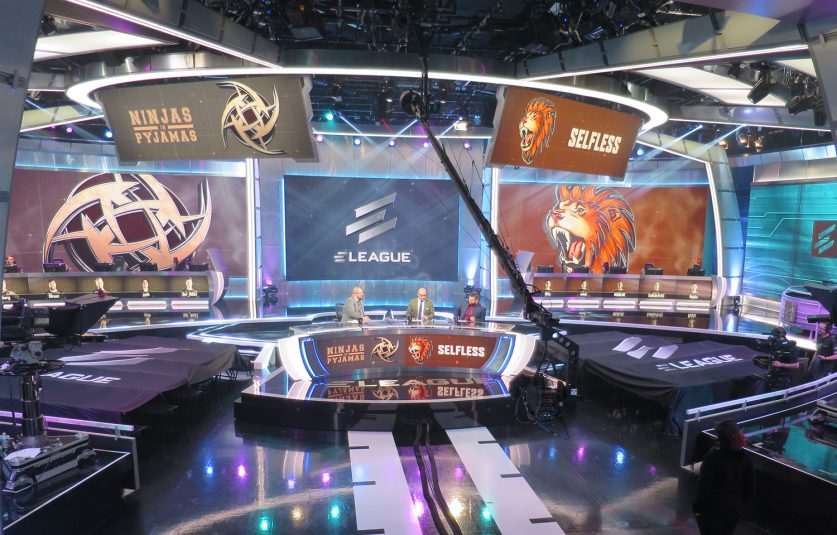
Featuring 25,000 sq. ft. of LED lighting, the new ELeague facility is both television studio and gaming arena.
“First and foremost, the goal was to make sure the players had a space and an environment that created equal opportunities in terms of competition,” says Fiorello. “We wanted to make sure that they were comfortable. Second, we wanted a space that was going to create a great experience for viewers coming into the space for the first time, which is why you see so much LED and technology in the studio. And last was the functionality of it: what are we going to use it for? We’re going to obviously have competitions in here, but we also want to use this for studio programming and possibly other events, so the set is really designed to be multipurposed.”
The desk is located in the center of the arena Monday through Thursday and is moved on Friday evenings to make way for the audience packed into the arena.
“Since Tuesdays through Thursdays have gaming going on for roughly seven hours, we knew we had to break it up a bit [with live studio programming],” says Fiorello. “In addition to that, we also wanted to do studio shows in the space, similar to Inside the NBA but specifically talking about eSports. So we designed this set to be multipurposed: when we bring in a studio audience, we can slide the desk out to a different position and fill the space with an audience. On days that we didn’t have a huge studio audience, we could slide the desk to the foreground position and compress the space so you don’t see empty seats.”
The studio features 26 cameras, including a POV camera dedicated to each of the 10 players and one focused on the collective team, a JITA (jib in the air) suspended from the ceiling for 360-degree shots of the event floor, two handhelds, and a Steadicam.
“We went through several [eSports] tournaments and watched how they were put together and the experience that they provided for the audience,” says Sahara. “We developed this studio based on what we saw and some of the feedback that we had from others that had participated in those tournaments. We really looked at trying to incorporate the best of what had been done in the past and find out the major pain points and try to be ahead of those.
“Could you do it cheaper?” he continues. “Yes. But [would] you have the same level of quality and the same level of commitment from the people? No way. The talent and the players see the level of our commitment and then immediately buy in. They saw our dedication from the beginning. They know we are taking this seriously.”
Inside the Control Room: A How-To in Producing eSports
The control room powering ELeague live streams and telecasts has a largely traditional setup, led by a producer, director, and technical director at the front bench. The real difference for eSports is in the back of the control room, where two “observers” are located. They serve as the director of the gameplay action itself, cutting between the first-person POVs.
The primary observer has a monitor displaying a mosaic of all 10 player POVs and an additional monitor showing the in-game map to indicate where each player is located within the game. The primary observer uses numbers 1 through 0 on a keyboard to switch between POVs, 1 through 5 representing one team and 6 through 0 representing the other. The second observer’s computer is on a seven- to 10-second delay, allowing capture of POV angles the primary observer may have missed. That computer feed goes directly into Turner’s EVS replay servers, so that, if the primary observer misses something from a specific angle, the secondary observer can switch to a specific POV. In addition, should the primary observer’s system crash, the secondary observer can instantly take over without losing gameplay.
“[The observers] can follow the game to the point where they know what’s coming before it actually happens,” Fiorello explains. “They have played the game extensively, they know all the players, and they’re semi-pros themselves. So they can look at all the POVs and the map and understand the strategies as they unfold.”
Each round is two minutes long (unless one team is entirely killed off before time expires), and then teams have a 20-second spawning period (buy and select weapons and artillery) during which Isos, replays, reaction shots, and crowd shots can be integrated into the telecast. In addition, Fiorello notes, the style and pacing for the linear telecast on Friday can differ from the Twitch live stream.
“Certainly, Tuesday through Thursday, the philosophy is a little different than Friday night. I directed our first Friday show, and the energy and the response from fans was exciting. It had the feeling [that] Tuesday through Thursday was the regular season — and that’s very important — but Friday had a playoff atmosphere. Everything gets a little ratcheted up for the playoffs; that’s what we were feeling on Friday.”
A Dedicated IT Network for ELeague
In addition to the new ELeague arena, Turner Studios built custom eSports office space and training facilities for the competing teams. It also built an IT network dedicated to ELeague at Techwood, with servers and a 10-gig circuit separate from those used by Turner Broadcasting.
“In terms of infrastructure, the broadcast [portion] was pretty much there. It was the gaming [portion] where we had to start fresh,” says Sahara. “We also wanted a high level of security, and that’s why, rather than trying to bring ELeague onto our network, we elected to build an entirely new network, which was a huge undertaking and investment. At this level, we can’t have a little hiccup that stops play. That was a huge consideration, and that took a large portion of our planning time to design and install the network.”
